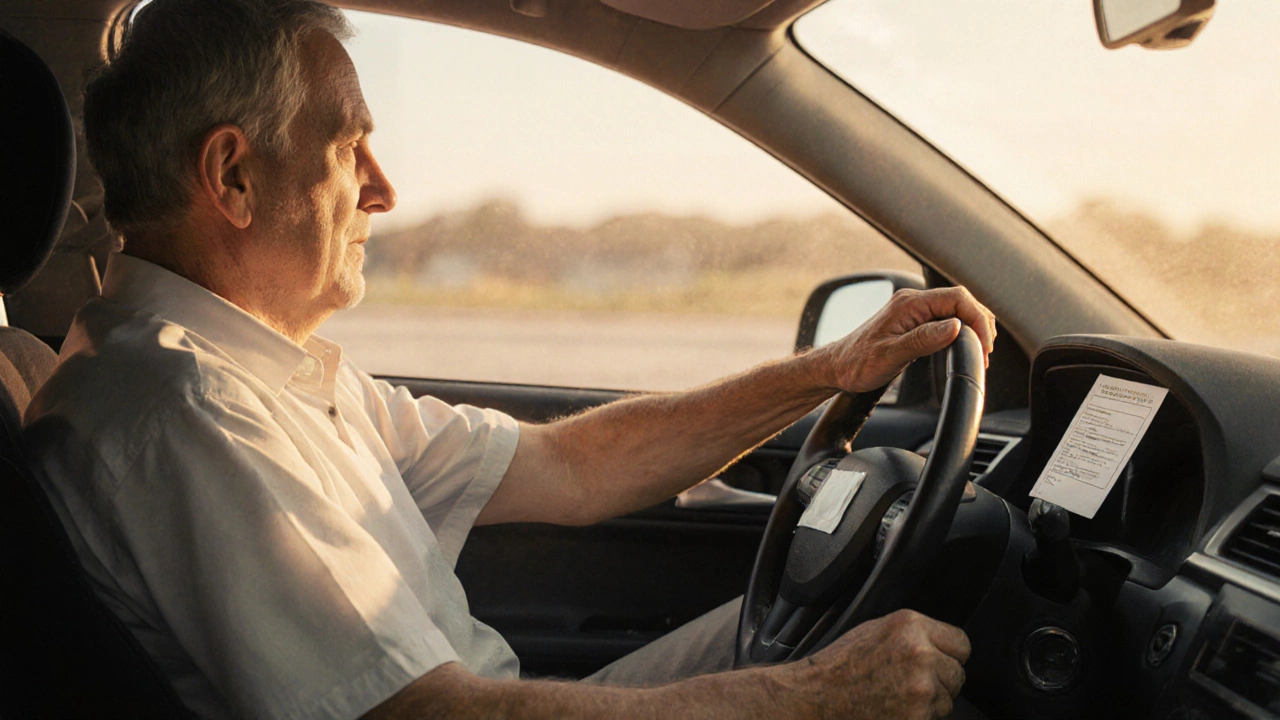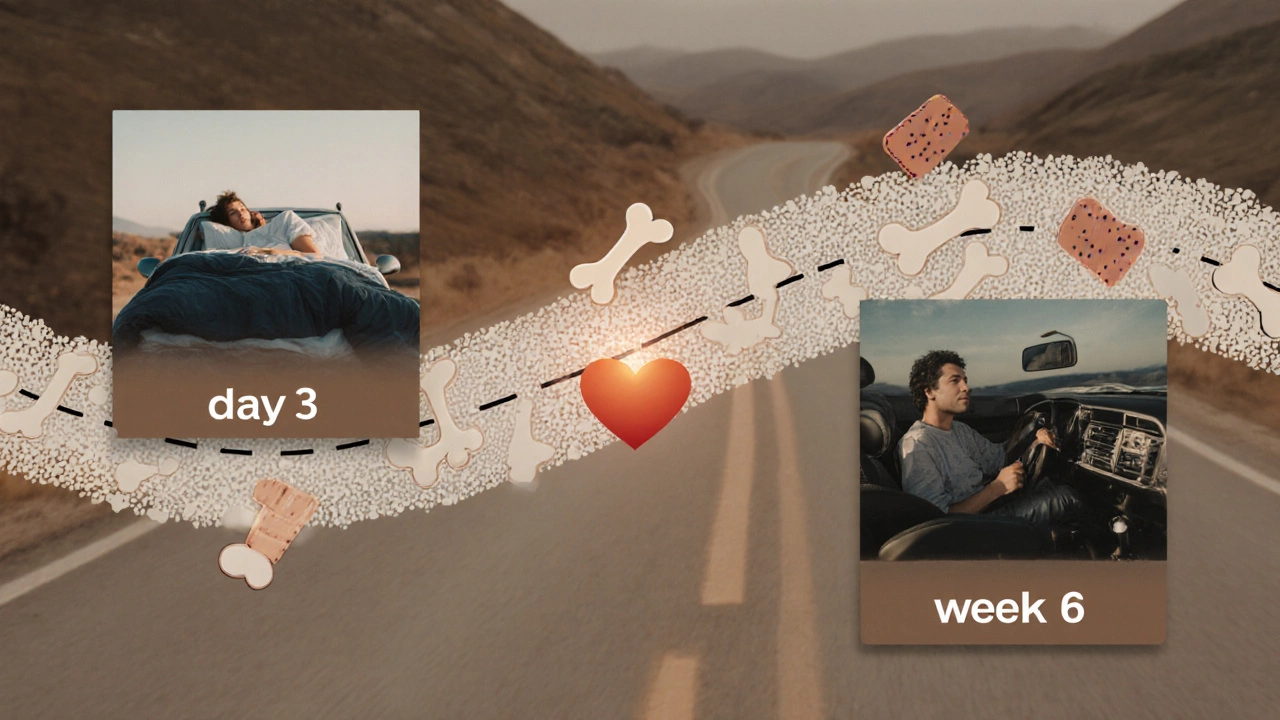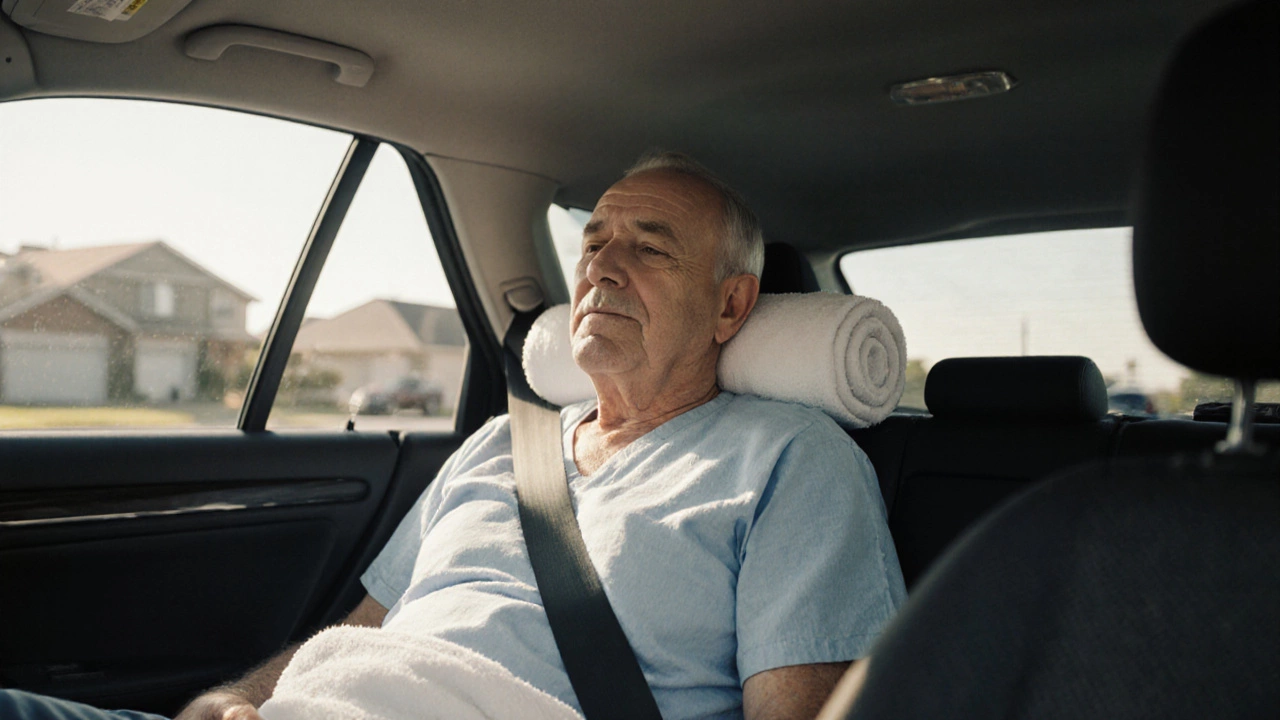Post-Heart Surgery Travel Calculator
Assess Your Travel Readiness
This tool helps determine safe travel timelines based on your recovery progress. Always consult your surgeon before traveling.
After open-heart surgery, the biggest question on your mind isn’t just recovery-it’s when you can get back to normal life. Can you drive? Can you ride in a car? How long do you have to wait before you feel safe, comfortable, and free to move again?
The short answer: most people can ride in a car within 1 to 2 weeks after surgery, but driving usually takes 4 to 6 weeks. It’s not about the clock-it’s about your body healing in the right order. Rushing this step can lead to complications, pain, or even setbacks that delay your recovery by weeks.
Why Car Travel After Heart Surgery Isn’t Simple
Open-heart surgery isn’t like a minor procedure. Your sternum (breastbone) was cut open, your ribs spread apart, and your heart was stopped and restarted. Even if you feel fine after a few days, your body is still rebuilding. The sternum takes about 6 to 8 weeks to fully heal. That’s why sudden movements, pressure, or even a bumpy ride can cause serious issues.
Think of your sternum like a broken arm. You wouldn’t lift heavy weights right after the cast goes on. Same logic applies here. The muscles, nerves, and tissues around your chest are still repairing. A car seatbelt, a sudden stop, or even turning your body to reach for something can put stress on healing tissues.
When Can You Ride in a Car as a Passenger?
Most patients can ride in a car as a passenger within 7 to 14 days after surgery, as long as they’re not in pain and their doctor gives the green light. Here’s what to check before you get in the car:
- You can sit upright without sharp chest pain
- You’re no longer on strong painkillers like opioids
- You can breathe comfortably without shortness of breath
- Your surgical wound is dry, closed, and not oozing
When you do ride, sit in the back seat if possible. It gives you more space to recline and reduces pressure on your chest. Use a pillow behind your back for support. Avoid long trips-start with short drives under 30 minutes. Keep the car temperature comfortable. Cold air can cause muscle stiffness, which increases discomfort.
One patient I worked with in Bangalore, a 68-year-old man who had a triple bypass, took his first car ride on day 10. He sat in the back, used a rolled towel under his lower back, and kept the windows slightly open for fresh air. He didn’t feel pain, but he was exhausted afterward. That’s normal. Rest is part of the ride.
When Can You Start Driving Again?
Driving is a bigger risk than riding as a passenger. You need full control of your body-braking, turning the wheel, reacting quickly. Most surgeons recommend waiting at least 4 to 6 weeks before driving. Here’s why:
- Reaction time is slower due to medication or fatigue
- Turning the steering wheel engages your chest muscles, which are still healing
- Seatbelts press directly on your sternum-this can be painful or even damage healing bone
- Stress from traffic or sudden stops can raise your heart rate dangerously
Before you get behind the wheel, test yourself:
- Can you turn your body 90 degrees to look over your shoulder without pain?
- Can you press the brake pedal hard enough to stop quickly without gasping?
- Do you feel alert and focused, not drowsy from pain meds?
- Has your doctor cleared you during a follow-up visit?
Some people feel ready at 4 weeks. Others need 8. It depends on your age, overall health, the type of surgery, and how well you followed rehab. Don’t compare yourself to others. Your recovery is yours alone.
What If You Need to Travel Longer Distances?
Long-distance travel-say, a 4-hour drive to visit family-is possible after 6 weeks, but it needs planning. Here’s how to do it safely:
- Break the trip into segments: stop every 90 minutes to walk for 5 minutes
- Wear compression socks to prevent blood clots
- Keep your seatbelt low across your hips, not over your sternum
- Bring your medications, water, and snacks
- Have someone else drive if possible
One woman I know, who had valve replacement surgery, drove 200 kilometers to see her grandchildren at 7 weeks. She drove only 45 minutes at a time, stopped every hour, and sat with her back supported. She felt fine afterward-but she had a plan. Don’t wing it.

Signs You’re Not Ready to Travel by Car
Even if the calendar says you’re past 4 weeks, listen to your body. If you have any of these symptoms, delay car travel:
- Chest pain or pressure when sitting or moving
- Dizziness or lightheadedness
- Swelling in your legs or ankles
- Shortness of breath at rest
- Fever or redness around your incision
These aren’t normal. They could mean infection, blood clots, or heart strain. Call your doctor immediately if any of these show up.
What About Air Travel?
While this question is about car travel, many people wonder about flying. Air travel is usually safe after 4 to 6 weeks, but airlines may require a doctor’s note. The cabin pressure changes can affect oxygen levels, and sitting still for hours increases clot risk. Always check with your cardiologist before booking a flight.
Recovery Tips That Make Car Travel Easier
Here are practical habits that helped patients I’ve worked with recover faster and travel more comfortably:
- Do your prescribed breathing exercises daily-this keeps your lungs clear and reduces fatigue
- Walk 10 to 15 minutes twice a day starting at week 1
- Use a pillow to cushion your chest when sitting or lying down
- Avoid lifting anything heavier than a coffee mug for 6 weeks
- Keep your incision clean and dry-sunlight can irritate healing skin
Many people underestimate how much energy recovery takes. Your body is working overtime to heal. Don’t add stress by rushing travel. Patience here saves you from hospital visits later.

What Your Doctor Will Ask Before Clearing You
At your 4- to 6-week checkup, your doctor will likely check:
- Your heart rhythm with an ECG
- Your blood pressure and oxygen levels
- How well your sternum is healing (sometimes with a simple X-ray)
- Your ability to do light activity without symptoms
If you’re cleared, you’ll get a written note. Keep it with you-some insurance companies or airlines may ask for proof you’re medically fit to travel.
Final Thought: Healing Isn’t Linear
Some days you’ll feel great. Other days, you’ll be tired, achy, or frustrated. That’s normal. Recovery after open-heart surgery isn’t a straight line-it’s a slow climb with ups and downs. Car travel is one milestone, not the finish line.
Don’t rush it. Listen to your body. Trust your medical team. And remember: the goal isn’t just to get in the car-it’s to get in the car safely, comfortably, and for many more trips ahead.
Can I ride in a car the day after open-heart surgery?
No. Riding in a car the day after surgery is not recommended. You’re still recovering from anesthesia, your body is unstable, and your sternum is extremely vulnerable. Most patients are advised to stay in bed or sit up in a chair for the first 24 to 48 hours. Short car rides may be allowed after 7 to 14 days, only if you’re pain-free and cleared by your doctor.
Why can’t I drive right away after heart surgery?
Driving requires physical strength, quick reflexes, and full control of your upper body. After open-heart surgery, your sternum is healing, and your chest muscles are weak. Turning the steering wheel, braking hard, or even wearing a seatbelt can cause pain or damage. Medications can also slow your reaction time. Waiting 4 to 6 weeks gives your body time to heal and your reflexes to return.
Does the type of heart surgery affect travel timing?
Yes. Minimally invasive procedures, like robotic-assisted valve repair, may allow earlier travel-sometimes as early as 2 weeks for passengers. But traditional open-heart surgery with a full sternotomy takes longer to heal. Bypass surgery, valve replacement, or repair of an aneurysm all require the same 4 to 6 weeks before driving. Always follow your surgeon’s advice, not general guidelines.
What if I feel fine at 3 weeks? Can I drive then?
Feeling fine doesn’t mean you’re healed. Your sternum takes 6 to 8 weeks to fully fuse, even if pain is gone. Driving too early can cause the bone to shift or the incision to reopen. One patient I worked with drove at 3 weeks, felt fine, but developed a sternum fracture 2 weeks later. He needed another surgery. Don’t risk it.
Can I travel internationally after open-heart surgery?
International travel is usually safe after 8 to 12 weeks, but only with your cardiologist’s approval. You’ll need to manage medications, avoid long flights without movement, and have access to medical care abroad. Always carry a copy of your surgery report and a list of your medications. Some countries require proof of medical fitness for visas-check ahead.
What to Do Next
Start by scheduling your 4-week follow-up with your surgeon. Ask them directly: “Am I ready to ride in a car? What about driving?” Write down their answer. Then, begin with short rides as a passenger. Gradually increase your activity. Don’t rush the milestones-your heart has been through a lot. Let it heal on its own timeline.
